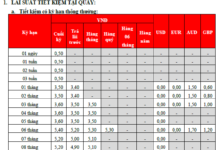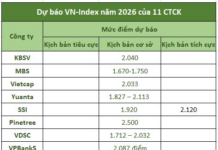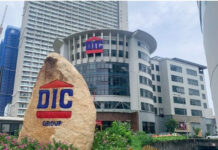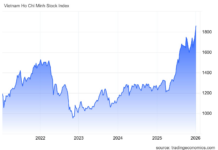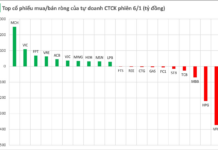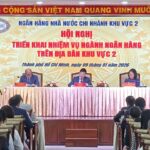According to VTC News, Mr. Dinh Viet Son, Deputy Director of the Civil Aviation Authority of Vietnam, said that up until now, 15 wet-lease aircraft of various airlines have been put into operation.
Vietjet Air has just received 2 additional aircraft, bringing the total number of supplementary aircraft serving the Lunar New Year peak to 6 (in addition to the previous 4 leased aircraft). Last week, the airline also added nearly 750 flights, equivalent to 154,800 seats, to meet the demand during the Tet holiday.
Vietnam Airlines has also “wet-leased” 4 Airbus A320 aircraft, adding nearly 1,000 flights.

Vietnam Airlines has added 4 aircraft to serve the travel needs of the people during the Tet holiday.
As of now, Vietnam Airlines Group will provide a total of 2.86 million seats during the Tet peak period. In particular, the number of early morning and night flights has increased significantly, with over 1,300 flights.
In early January, Bamboo Airways also “wet-leased” 2 aircraft to serve the sudden increase in travel demand during the Tet holiday.
Although the ticket booking rate is high, as of February 4, there are still available seats on many routes.
Mr. Dinh Viet Son said that the routes from Ho Chi Minh City to provinces with high booking rates are evenly spread between February 2 and February 9.
Specifically, the Ho Chi Minh City – Hai Phong route (85-98%), Ho Chi Minh City – Hue route (86-99%), Ho Chi Minh City – Pleiku route (88-99%), Ho Chi Minh City – Thanh Hoa route (85-96%), Ho Chi Minh City – Chu Lai route (92-98%), Ho Chi Minh City – Quang Binh route (89-103%), Ho Chi Minh City – Vinh route (90-98%).
Some routes still have available seats, such as the Ho Chi Minh City – Buon Ma Thuot route with a booking rate of 76-83% from February 3-5, the Ho Chi Minh City – Tuy Hoa route with a booking rate of 70% on February 2, 85% on February 8, and 72% on February 9.
Similarly, the Ho Chi Minh City – Quy Nhon route has a booking rate of 76-78% on February 3 and February 9, and the Ho Chi Minh City – Vinh route on February 9 has a new booking rate of 67%.
“However, the fact that there are still available seats on February 9, which is the 30th day of the Lunar New Year, is considered too late for many people. Therefore, it is understandable that the demand for booking tickets is lower. From February 4-8, the ‘hot’ routes like Ho Chi Minh City to Thanh Hoa, Nghe An, Quang Binh, Pleiku… are still fully booked,” said Mr. Son.
It is worth noting that even on routes with available seats, the prices of economy class tickets are still very high, ranging from over 3.52-4.2 million VND per segment/ticket (including taxes and fees), such as the flights from Ho Chi Minh City to Vinh or Thanh Hoa by Vietjet Air and Vietnam Airlines; the flights to Chu Lai with prices ranging from 2.44-3.5 million VND by Vietravel Airlines and Vietjet; the flight to Pleiku with a price of 1.9 million VND per ticket (Vietjet)…

Vietnam Airlines increases over 1,300 flights to serve the travel needs of the people during the Tet holiday.
According to the explanation of the Civil Aviation Authority and airlines, one of the reasons for the high ticket prices during the Tet holiday is that the airlines have to offset the round-trip costs according to the market regulation.
“If the Tet ticket prices are not increased to offset the empty one-way tickets, the airlines will incur losses because all flights have to bear the same costs including landing fees, fuel, crew members, slots, etc. Even though the prices have increased, they still conform to the maximum and minimum price regulations,” said Mr. Dang Anh Tuan, Deputy General Director of Vietnam Airlines.
Meanwhile, in response to VTC News, Mr. Dinh Viet Thang, Director of the Civil Aviation Authority, said that during the Tet peak period, all flights of airlines have to accept one crowded end and one empty end or very few passengers.
Data from the Civil Aviation Authority shows that if normal flights or summer flights are fully booked in both directions, then most Tet flights have empty one-way tickets, with only 20-25% seat occupancy.
For example, before Tet, the rate of flights in both directions from Hanoi and airports in the North to Ho Chi Minh City was quite low. The Thanh Hoa – Ho Chi Minh City flight on February 2 had a seat occupancy rate of 7.91%, Vinh – Ho Chi Minh City: 11.98%; on February 3, the Vinh – Ho Chi Minh City route had a seat occupancy rate of 17.02%, Binh Dinh – Ho Chi Minh City: 16.62%…

Airlines increase flights but ticket prices remain very high.
Similarly, the flights from Ho Chi Minh City to the North after Tet were also quite empty.
Specifically, on February 4, the Ho Chi Minh City – Pleiku route had a booking rate of 16.61%, Ho Chi Minh City – Tuy Hoa: 16.87%; on February 8, the Ho Chi Minh City – Buon Ma Thuot route: 11.19%…
Other routes from Hanoi and other provinces to Ho Chi Minh City before Tet were also very low, averaging only 20-30% with many empty flights. The same applies to flights from Ho Chi Minh City to Hanoi or provinces in the Central, Central Highlands, and the North, with an average rate of only 30%. Meanwhile, the airlines still have to pay for fuel, taxes and fees, flight crews, which makes the airfare during Tet expensive.
“Every year is the same. Before Tet, flights from the South to the Central and North regions are fully booked, while the reverse direction is mostly empty. After Tet, flights from the North and Central to the South are full, while the reverse direction is empty. Even though the airplanes have few passengers or even no passengers, they still have to fly according to the registered slot,” said Mr. Thang.
“In principle, when calculating ticket prices, airlines have to consider both outbound and inbound costs to offset their expenses. If they only consider one-way, the airlines cannot find any costs to offset,” Mr. Thang added.
According to Mr. Thang, during this period, all 15 wet-lease aircraft of Vietnamese airlines have been put into operation.
“The Civil Aviation Authority of Vietnam is guiding and coordinating with airlines and airports to be able to increase supply capacity, with an expected 2-3 flights per day on some routes from Ho Chi Minh City to provinces with high demand,” emphasized Mr. Thang.







